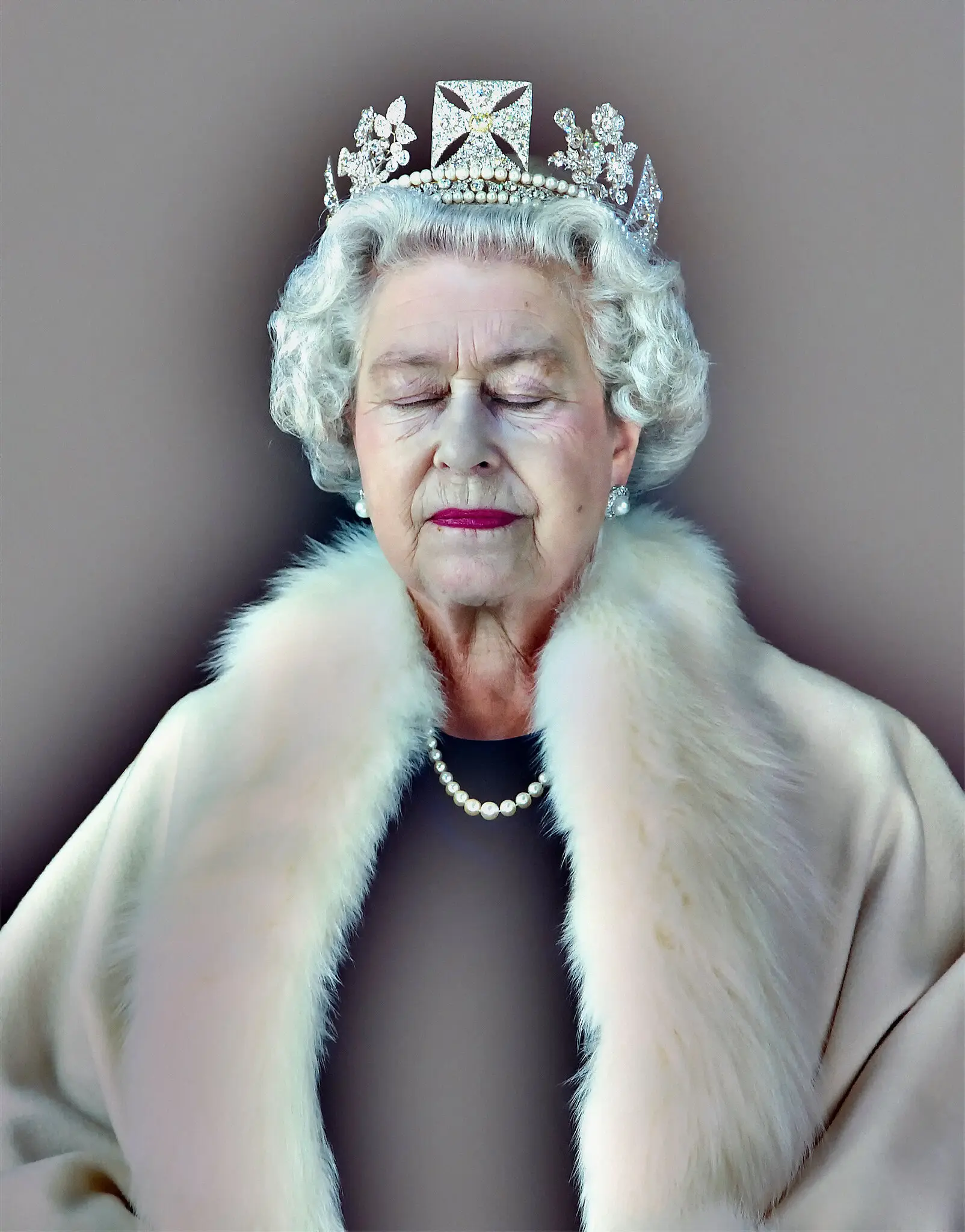After the very sad passing of the Queen on September 8th 2022, we thought it would be fitting to look back over the rich and varied history of portraits commissioned of the Queen.
To remember the Queen in a perhaps more intriguing light and maybe even find a new side to her majesty, we decided to honour her memory by focussing on some of the more unusual portraits to have been created.
The Queen by Lucian Freud, 2001
Freud is one of the world's most celebrated portrait painters, employing a brutally honest yet beautiful approach to capturing his subjects, showing their vulnerability and humanity. His style can appear unrefined at first, lacking as it does in delicate brushstrokes or any kind of gentle approach. The thick, bold layers of paint do, however, convey an unflinching physicality while also seeing deep into the personality and emotions of the sitter - Freud had an ability to portray these sides to his subjects, which is perhaps where the real sensitivity in his approach is apparent.
This portrait of the Queen was direct and unflattering, yet, as ever, he captured her humanity and most importantly of all - the heavy burden of duty that Queen Elizabeth bore so well throughout her life dedicated to public service.
The art critics who can see past the superficial style of the portrait tend to hail it as a masterpiece and often claim it is the best portrait of the Queen in existence.

The Queen by Justin Mortimer, 1997
This portrait from 1997 was commissioned by the Royal Society of Artists and was, predictably, trashed by the mainstream UK media, much of whom focussed on the 'beheaded' appearance of the Queen, as her neck is missing from this photo montage portrait.
The artist is a republican, so not necessarily all that enamoured by royalty in general however, this makes for a refreshing approach, dispensing with sycophancy and tradition. The idea of the image looking disjointed was to reflect the changing role and attitude to the monarchy in the modern age and the head and body being so detached is to represent the detachment of the monarchy from the real world inhabited by their subjects.
So, not really the most reverent of portraits, but it'd be boring if we were all the same, wouldn't it?

The Lightness of Being by Chris Levine,
This photograph really is something else! Queen Elizabeth looks less like the longest serving British monarch in history here, and more like she's stepped out of a Madonna video!
Capturing a different kind of icon approach, the photographer bathed the Queen in pulsating light to try and get past the stuffy representations usually associated with royal portraits.
The result is a bold and dynamic yet peaceful image of the Queen - full of power and authority yet with a strong, pervading sense of peace. This is probably our favourite portrait of her majesty!

Golden Jubilee Portrait of Queen Elizabeth II by Chinwe Chukwuogo-Roy, 2002
OK, so this one's not really controversial at all but we had to include it just because it's so different and refreshing. Chinwe was a British artist, originally from Nigeria and this may be why she took the approach of creating a montage of famous landscapes and landmarks from around the Commonwealth, to express the Queen's international influence and her reign over so many varied territories. The painting is a rich and heady tapestry of loud colours and strong shapes and tones, so much so that you can almost hear the delicious clamour of cultures - music, art, language and so much more - through the picture, yet at the centre is the ever-calming influence of the Queen in all her dignity.

The Queen by Dan Llywelyn Hall, 2016
We've saved the best (or worst?) to last. To be honest, we quite like it but it hasn't gone down well with the critics! This painting was the result of a three-hour sitting with her majesty and although it certainly has an amateur look to it in places - such as the rendering of the chair and the attention to anatomy - it looks like the Queen and somehow really captures her personality and presence, which is no mean feat when you're clearly not going for anything like a photo-realistic representation.
To us, the muted skin tones and flatness of the painting reflect the buttoned-down restraint the Queen has shown throughout her reign. Her strong character and wit are widely known but barely revealed in public, and so it is in this portrait - a suppressed and dignified presence, even in the intimate situation of sitting for her portrait.

